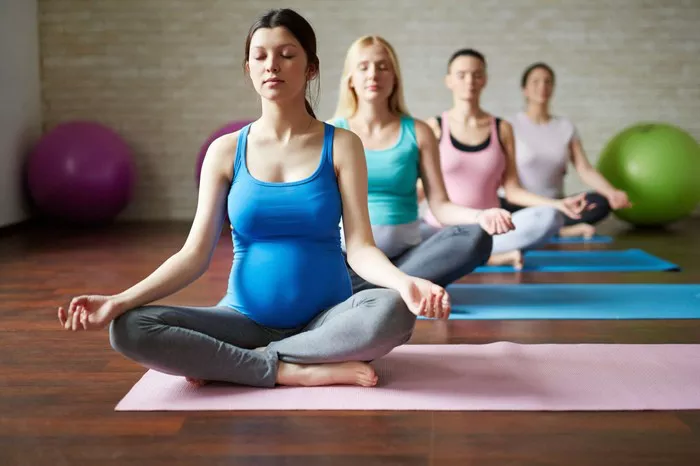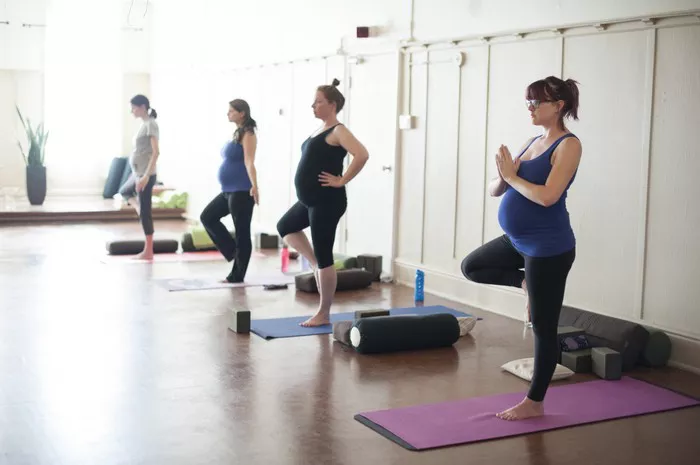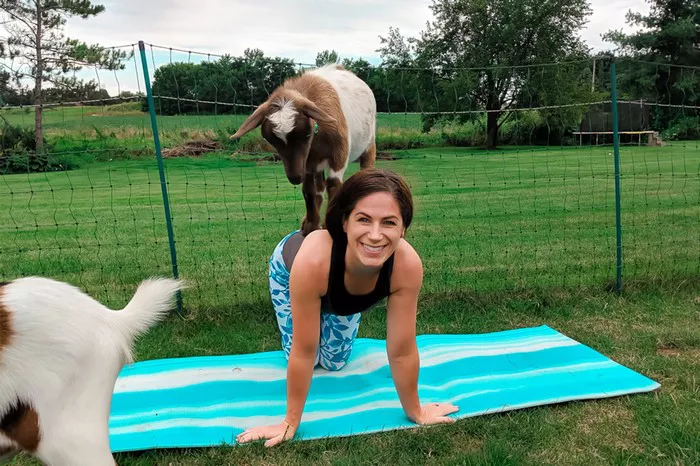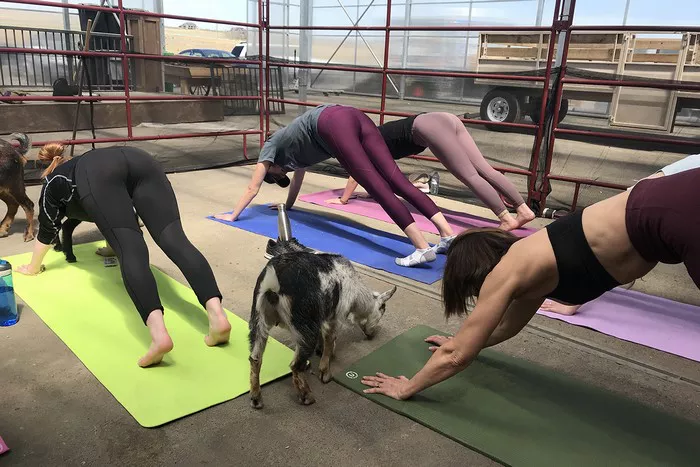Yoga can be a valuable tool for expecting mothers, especially in the third trimester. It provides relaxation, improves mobility, and helps reduce discomfort. However, during this stage of pregnancy, certain modifications are necessary to accommodate the growing baby and the physical changes your body is undergoing. This article will guide you through the best yoga stretches to practice during the third trimester, explain their benefits, and offer safety tips for your prenatal yoga routine.
Why Yoga Is Important During the Third Trimester
The third trimester, which begins around the 28th week of pregnancy, is often the most physically challenging. The baby grows rapidly, and the additional weight can cause discomfort, especially in the lower back, hips, and legs. Yoga helps alleviate some of these discomforts while promoting relaxation and preparing the body for labor.
Benefits of Third Trimester Yoga Stretches
Relieves tension and discomfort: Gentle stretching can ease the pressure on your back, hips, and legs, reducing pain and stiffness.
Improves circulation: Certain poses stimulate blood flow, reducing swelling in the legs and feet, a common issue during the third trimester.
Prepares the body for labor: Stretching and yoga poses can open the hips and strengthen the pelvic floor, helping you prepare for childbirth.
Promotes relaxation: Yoga encourages mindfulness and deep breathing, which can reduce anxiety and help you feel calm during this phase.
Boosts energy: Gentle movement through yoga can give you a much-needed energy boost and counteract the fatigue of pregnancy.
Safety Considerations for Yoga in the Third Trimester
Before diving into specific stretches, it’s essential to understand the modifications and safety tips for practicing yoga during the third trimester. At this stage, your body requires extra support and gentler movements to avoid strain.
Listen to your body: Never push yourself to discomfort. If a stretch feels too intense or uncomfortable, stop immediately.
Avoid lying on your back: In the third trimester, avoid any poses that require you to lie flat on your back for extended periods, as this can reduce blood flow to the baby.
Use props: Support your body with props like pillows, blocks, or bolsters to ensure comfort and balance during poses.
Modify twists: Deep twists are not recommended during the third trimester. Focus on gentle, open twists that don’t compress the abdomen.
Breathe deeply: Focus on long, slow breaths during your practice. Proper breathing techniques can help during labor as well.
With these safety tips in mind, let’s explore some of the best yoga stretches for the third trimester.
Top Third Trimester Yoga Stretches
1. Cat-Cow Stretch (Marjaryasana-Bitilasana)
The Cat-Cow Stretch is an excellent way to relieve tension in the spine and improve mobility. It’s a gentle stretch that is safe for expecting mothers throughout their pregnancy.
How to Perform Cat-Cow Stretch:
Begin on your hands and knees in a tabletop position. Make sure your wrists are aligned with your shoulders and your knees are directly under your hips.
As you inhale, arch your back, lift your head and tailbone towards the ceiling (Cow Pose).
As you exhale, round your spine, tuck your chin to your chest, and tuck your tailbone (Cat Pose).
Continue to alternate between these two positions, moving with your breath. This movement helps to stretch the spine and release tension in the lower back.
Benefits of Cat-Cow Stretch:
- Eases lower back discomfort
- Stretches the spine and abdominal muscles
- Encourages flexibility in the pelvic region
2. Child’s Pose (Balasana)
Child’s Pose is a restorative pose that helps relieve tension in the hips and lower back. It’s perfect for calming the mind and body while gently stretching the hips, back, and shoulders.
How to Perform Child’s Pose:
Begin by kneeling on the floor, with your knees wide apart to create space for your belly.
Sit back onto your heels, and gently lower your chest towards the floor.
Extend your arms forward or rest them alongside your body.
Rest your forehead on the mat or a cushion for added comfort.
Breathe deeply and hold the pose for as long as you feel comfortable.
Benefits of Child’s Pose:
- Stretches the hips and lower back
- Promotes relaxation and reduces stress
- Helps relieve tightness in the shoulders
3. Supported Squat (Malasana)
Squats are excellent for strengthening the legs and opening the hips, which is especially helpful in preparing for labor. In the third trimester, it’s best to use support to maintain balance and prevent strain.
How to Perform Supported Squat:
Stand with your feet slightly wider than hip-width apart.
Lower yourself into a squat, keeping your heels on the ground.
Use a chair, wall, or blocks for support if needed.
Keep your spine straight and chest lifted as you hold the squat.
Breathe deeply and hold the position for 30 seconds to a minute.
Benefits of Supported Squat:
- Strengthens the legs and pelvic floor
- Opens the hips and promotes flexibility
- Prepares the body for labor by mimicking birthing positions
4. Bound Angle Pose (Baddha Konasana)
Bound Angle Pose is a gentle stretch for the inner thighs and hips, which can become tight during pregnancy. It’s also a great way to improve blood circulation in the pelvic region.
How to Perform Bound Angle Pose:
Sit on the floor with your legs extended in front of you.
Bring the soles of your feet together and allow your knees to fall open towards the floor.
Sit up tall and hold your feet or ankles, keeping your back straight.
You can place pillows or blocks under your knees for support.
Breathe deeply and hold the pose for 1-2 minutes.
Benefits of Bound Angle Pose:
- Stretches the inner thighs and hips
- Improves circulation in the pelvic area
- Supports flexibility and relaxation in the hips
5. Seated Forward Bend (Paschimottanasana)
While traditional forward bends may be challenging during the third trimester, a modified version of Seated Forward Bend can help stretch the back and legs gently.
How to Perform Seated Forward Bend:
Sit on the floor with your legs extended in front of you.
Place a bolster or a few pillows on your thighs.
Gently lean forward over the pillows, reaching for your shins, ankles, or feet.
Keep your back straight and avoid compressing your belly.
Hold the pose for 30 seconds to a minute, breathing deeply.
Benefits of Seated Forward Bend:
- Stretches the back and hamstrings
- Relieves lower back tension
- Encourages relaxation and deep breathing
6. Reclined Butterfly Pose (Supta Baddha Konasana)
Reclined Butterfly Pose is a relaxing stretch that opens the hips and promotes deep relaxation. This pose is often done with props to ensure comfort and ease for expecting mothers.
How to Perform Reclined Butterfly Pose:
Lie on your back with a bolster or a few pillows supporting your upper body to keep your head elevated.
Bring the soles of your feet together and let your knees fall open to the sides.
Rest your arms by your sides or on your belly.
Breathe deeply and hold the pose for 1-2 minutes.
Benefits of Reclined Butterfly Pose:
- Gently opens the hips
- Promotes relaxation and reduces anxiety
- Relieves tension in the lower back and pelvic area
7. Side-Lying Leg Stretch
This simple yet effective stretch targets the hips and thighs, helping to relieve tension and improve flexibility. It’s performed in a comfortable side-lying position, making it safe for the third trimester.
How to Perform Side-Lying Leg Stretch:
Lie on your side with a pillow supporting your head.
Bend the bottom leg for stability and extend the top leg straight out.
Slowly raise the top leg, keeping it straight, then lower it back down.
Repeat this movement 8-10 times, then switch sides.
Benefits of Side-Lying Leg Stretch:
- Stretches the hips, thighs, and lower back
- Improves circulation in the legs
- Eases discomfort in the hips and pelvis
See also: Does Yoga Have an Impact on Pregnancy Plans?
Breathing and Relaxation Techniques
In addition to stretches, focusing on your breath is essential during prenatal yoga. Deep breathing techniques can calm the mind, relieve stress, and prepare you for labor.
Deep Belly Breathing
Sit comfortably in a cross-legged position or lie on your side.
Place one hand on your belly and one hand on your chest.
Inhale deeply through your nose, allowing your belly to rise.
Exhale slowly, feeling your belly fall as you release tension.
Repeat for several minutes, focusing on long, slow breaths.
Benefits of Deep Belly Breathing:
- Promotes relaxation and stress relief
- Improves lung capacity and oxygen flow
- Helps prepare for the controlled breathing needed during labor
Conclusion
Yoga during the third trimester is a powerful tool to help you stay flexible, reduce discomfort, and prepare for labor. The gentle stretches mentioned in this guide are designed to keep you safe, comfortable, and connected with your body as you approach the final stages of pregnancy. Always listen to your body, use props for support, and consult with your healthcare provider before starting any new exercise routine. Practicing these third-trimester yoga stretches can make a significant difference in your overall well-being, helping you feel empowered and ready for childbirth.
Related topics:
Is It Safe to Do Yoga in the First Trimester?





















